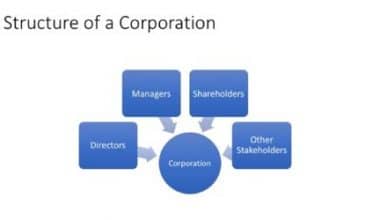A person or organization can use the SWOT analysis (also known as the SWOT matrix) to discover Strengths, Weaknesses, Opportunities, and Threats (SWOTs) relevant to business competition or project planning. Situational analysis or appraisal of the current situation are other names for it.
SWOT Analysis
SWOT analysis is a framework used to assess a business’s standing in the marketplace and to create strategic planning. It stands for strengths, weaknesses, opportunities, and threats. The SWOT analysis evaluates both within and outside factors as well as present and anticipated future situations.
A SWOT analysis is intended to help you take a practical, fact-based, and data-driven look at the advantages and disadvantages of a company, its efforts, or its sector. Whether you’re launching a new business or managing an established one, a SWOT analysis is an amazingly and straightforward yet effective technique to help you define your business plan.
SWOT Analysis Example
Consider that you manage an online store. Your brand has just been offered for sale by one of your rivals. You’re unsure if you should sell or keep your company. So you conduct a SWOT analysis to gain more clarity.
Your strengths are listed:
Your company constantly makes a profit.
For a number of really important keywords associated with your items, your website is performing well in Google search results.
To cut labor costs, you’ve automated a lot of your internal operations.
You then list your flaws (weaknesses):
Your customer service operations are subpar, which has resulted in some unfavorable online evaluations.
Because few of your products have a significant profit margin, you must regularly sell in large quantities.
You rarely have recurring business, so you do what’s right.
Prospects follow (opportunity):
One of your main rivals just made the decision to shut down their company. There is a resulting market gap.
You have begun to get inquiries concerning link -building and influencer sponsorships.
Risks are behind (threats):
Your goods don’t respect the environment. A decrease in consumer support for your items could result from rising ecological sustainability.
Third parties like eBay and Etsy play a significant role in your capacity to sell your goods.
Political upheaval is causing difficulties to move your goods to potential gradient buyers.
Template for a SWOT Analysis
Making a template for your e-commerce SWOT Analysis is very practical, and you can do so by following the clear instructions below. For instance, if you want to develop a template for your designer-bag business online and you own the company, you could use a template like this:
Strengths: Sells both new and old (rebranded) designer bag
Stock and bulk qualities high in demand
AI-based latest designer’s bag recommendation
24/7 customer reviews and support
Weaknesses: No physical store
No physical options for “check before buy.”
Preference for old bags over new ones due to hiked prices.
Opportunities: New business model “seller redirection”
Increasing demands for luxurious bags and accessories
Threats: Loopholes that can promote “imitation”
Seller redirection may often lead to a bad customer experience
SWOT Analysis Opportunities Examples
1. Economic expansion could be on the horizon, which would help raise our hopes.
The opportunity of hiring new people, some of whom might have innovative ideas for the business.
2. The increase in population in our nation will contribute to a rise in the number of potential purchasers in the upcoming years.
3. Within our industry, there has recently been an increase in interest in items similar to ours, which we may take advantage of.
4. Our recent press coverage and any future media interest could help us achieve our periodic objectives.
How do you write a SWOT analysis?
Before and after assessing the four components, a SWOT analysis can be divided into numerous sections with concrete recommendations. The following steps will often be involved in a SWOT analysis.
#1. Define Your Goals
Although a SWOT analysis might be broad, it is likely to be more valuable if it is focused on a specific goal. For instance, the goal of a SWOT analysis would be to determine whether or not to launch a new product. A corporation will have direction on what they intend to accomplish at the conclusion of the process if they have an objective in mind.
#2. Get The Appropriate Team Together
Make an effort to include representatives from each department and team when you assemble people from various aspects of your business. The effectiveness of your SWOT analysis will depend on the completely diverse perspectives that various groups inside your firm will have.
#3. Assemble Resources
Every SWOT analysis will vary, and a company may need different data sets to support pulling together different SWOT analysis tables. A company should begin by understanding what information it has access to, what data limitations it faces, and how reliable its external data sources are.
#4. Develop Ideas
It is important to delegate team members with the task of finding ideas and when ideas are developed, is then arranged in the format:
These queries might assist clarify each part and encourage original thought.
Strengths
Strengths are intrinsic, advantageous characteristics of your business. These are things that you can influence.
Which business procedures are effective?
What strengths do your teams possess? The tangible assets you have, such as clients, tools, cash, technology, and patents, in addition to your knowledge, education, network, skills, and reputation?
What advantages do you have over your rivals in terms of competition?
Weaknesses
They take away from your strengths in a bad way. You might need to work on these areas to be competitive.
Are there any requirements for your company to remain dynamic?
Which corporate procedures require increment?
Does your business require any movable assets, such as cash or machinery?
Do you have any deficiencies in your team?
To begin a list of external causes, you can consider asking:
Opportunity: Which market trends are readily apparent?
What racial or ethnic groups are we avoiding?
Threat: How many rivals are there, and what is their percentage of the market?
Are there any recent laws that might harm our company or our goods?
#5. Rank Ideas Generated
It’s time to rank the concepts when they have all been organized. I prefer a voting system where each participant is given five or ten “votes” to be used however they see fit. You should have a list of ideas ranked in priority based on the voting process. Naturally, the list is now open for argument, and someone in the room should be able to decide on the priority in the end. Normally, the Chief exec is in charge of this, however, another person in charge of corporate strategy could take over.
What Is the Main Purpose of SWOT Analysis?
With a SWOT analysis, a corporation can strategically pinpoint areas for growth or competitive advantages. In addition to examining a company’s strong points, a SWOT analysis also considers the weaker, more harmful aspects. By using this knowledge, a firm may make better decisions to protect what it does well, build on its advantages, mitigate the hazards associated with its vulnerabilities, and anticipate prospective events that might be bad for it.
What Are the 3 C’s in SWOT Analysis?
Using this approach, you concentrate your analysis on the three Cs, or tactical triangle,” which are the company, the competitors, and the customers.
What Are Opportunities in SWOT?
Opportunities are advantageous outside variables that might provide a business with an edge over others. If a nation lowers its duties, for instance, a car manufacturer may export its vehicles into a new market, boosting its revenue and market share.
What Is a Basic SWOT Analysis?
A basic SWOT analysis is an analysis that is conducted before a business plan is carried out and it must contain the effective framework below:
- Strength
- Weakness
- Opportunity
- Threats
What Are 4 Types of Strategies Developed in SWOT Analysis?
Four major types of strategies developed in SWOT analysis are: The Strengths-Weaknesses-Opportunities-Threats (SWOT) Matrix is an essential corresponding instrument that helps managers in creating four different types of strategies:
SO (Strengths-Opportunities) strategies,
WO (Weaknesses-Opportunities) strategies,
ST (Strengths-Threats) strategies, and
WT (Weaknesses-Threats) strategies.
What Are 3 Major Benefits of SWOT Analysis?
A SWOT analysis can’t even answer all of a company’s pressing issues. Nonetheless, there are certain advantages to a SWOT analysis that facilitate strategic decision-making.
- An external study of a situation is necessary. A business may be tempted too frequently to make judgments based solely on internal variables. But frequently, factors that are beyond the company’s control might affect how a business decision turns out. A SWOT analysis considers both internal and external elements, the latter of which may be more challenging to control.
- The cost of creating a SWOT analysis might not be very high. Creating a SWOT analysis could play a key role in letting you know why some aspects of your organization are struggling.
- You can use a SWOT analysis to evaluate practically any business issue. The analysis may be applicable to a group, team, or person. Additionally, it can assess a complete product range and brand adjustments. The SWOT analysis is a flexible tool with numerous uses.
What Is the Most Important Thing in SWOT Analysis?
While being divided into four categories, the definition of a SWOT analysis includes two key components. The study of strengths and shortcomings comes first. This section offers the chance to examine the company’s internal operations to determine its strengths and weaknesses. You can apply this to a particular project, method, or corporation in its entirety.
In essence, SWOT analysis determines how healthy a company is. SWOT analysis is useful in determining the organization’s existing situation before choosing a strategy. While performing a SWOT analysis, S stands for the company’s internal strengths, W for its exterior weaknesses, O for opportunities, and T for threats.
SWOT analysis will reveal the organization’s current situation and the actions required to improve it.
Conclusion
Everyone will conduct a separate SWOT analysis. The aforementioned SWOT analysis opportunity examples might help you come up with ideas for your own SWOT matrix. If you decide to use some of the aforementioned examples, pick and choose those that truly speak to you and are accurate portrayals of opportunities that could perhaps fit into your objectives.
Related Articles
- Competitor Analysis: All you need (+ How To Start Guide)
- BUSINESS ANALYSIS TOOLS: Understanding Business Analysis
- How to make Your Ideas Work. Part






